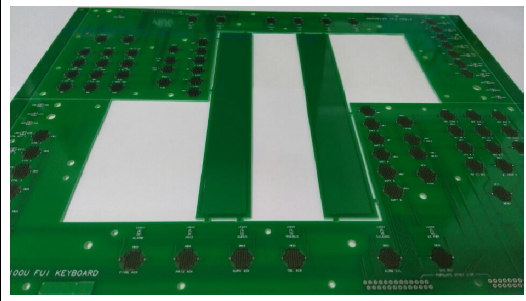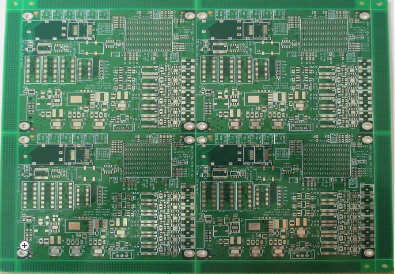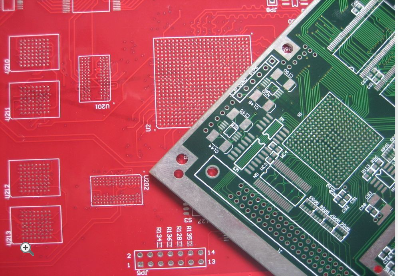-
 Agriculture
Agriculture
-
 Health-Care
Health-Care
-
 Environment
Environment
-
 Construction-Real-Estate
Construction-Real-Estate
-
 Tools-Hardware
Tools-Hardware
-
 Home-Garden
Home-Garden
-
 Furniture
Furniture
-
 Luggage-Bags-Cases
Luggage-Bags-Cases
-
 Medical-devices-Supplies
Medical-devices-Supplies
-
 Gifts-Crafts
Gifts-Crafts
-
 Sports-Entertainment
Sports-Entertainment
-
 Food-Beverage
Food-Beverage
-
 Vehicles-Transportation
Vehicles-Transportation
-
 Power-Transmission
Power-Transmission
-
 Material-Handling
Material-Handling
-
 Renewable-Energy
Renewable-Energy
-
 Safety
Safety
-
 Testing-Instrument-Equipment
Testing-Instrument-Equipment
-
 Construction-Building-Machinery
Construction-Building-Machinery
-
 Pet-Supplies
Pet-Supplies
-
 Personal-Care-Household-Cleaning
Personal-Care-Household-Cleaning
-
 Vehicle-Accessories-Electronics-Tools
Vehicle-Accessories-Electronics-Tools
-
 School-Office-Supplies
School-Office-Supplies
-
 Packaging-Printing
Packaging-Printing
-
 Mother-Kids-Toys
Mother-Kids-Toys
-
 Business-Services
Business-Services
-
 Commercial-Equipment-Machinery
Commercial-Equipment-Machinery
-
 Apparel-Accessories
Apparel-Accessories
-
 Security
Security
-
 Shoes-Accessories
Shoes-Accessories
-
 Vehicle-Parts-Accessories
Vehicle-Parts-Accessories
-
 Jewelry-Eyewear-Watches-Accessories
Jewelry-Eyewear-Watches-Accessories
-
 Lights-Lighting
Lights-Lighting
-
 Fabric-Textile-Raw-Material
Fabric-Textile-Raw-Material
-
 Fabrication-Services
Fabrication-Services
-
 Industrial-Machinery
Industrial-Machinery
-
 Consumer-Electronics
Consumer-Electronics
-
 Electrical-Equipment-Supplies
Electrical-Equipment-Supplies
-
 Electronic-Components-Accessories-Telecommunications
Electronic-Components-Accessories-Telecommunications
-
 Home-Appliances
Home-Appliances
-
 Beauty
Beauty
-
 Chemicals
Chemicals
-
 Rubber-Plastics
Rubber-Plastics
-
 Metals-Alloys
Metals-Alloys
- Masonry Materials
- Curtain Walls & Accessories
- Earthwork Products
- Fireproofing Materials
- Heat Insulation Materials
- Plastic Building Materials
- Building Boards
- Soundproofing Materials
- Timber
- Waterproofing Materials
- Balustrades & Handrails
- Bathroom & Kitchen
- Flooring & Accessories
- Tiles & Accessories
- Door, Window & Accessories
- Fireplaces & Stoves
- Floor Heating Systems & Parts
- Stairs & Stair Parts
- Ceilings
- Elevators & Escalators
- Stone
- Countertops, Vanity Tops & Table Tops
- Mosaics
- Metal Building Materials
- Multifunctional Materials
- Ladders & Scaffoldings
- Mouldings
- Corner Guards
- Decorative Films
- Formwork
- Building & Industrial Glass
- Other Construction & Real Estate
- Wallpapers/Wall panels
- HVAC System & Parts
- Outdoor Facilities
- Prefabricated Buildings
- Festive & Party Supplies
- Bathroom Products
- Household Sundries
- Rain Gear
- Garden Supplies
- Household Cleaning Tools & Accessories
- Lighters & Smoking Accessories
- Home Storage & Organization
- Household Scales
- Smart Home Improvement
- Home Textiles
- Kitchenware
- Drinkware & Accessories
- Dinnerware, Coffee & Wine
- Home Decor
- Golf
- Fitness & Body Building
- Amusement Park Facilities
- Billiards, Board Game,Coin Operated Games
- Musical Instruments
- Outdoor Affordable Luxury Sports
- Camping & Hiking
- Fishing
- Sports Safety&Rehabilitation
- Ball Sports Equipments
- Water Sports
- Winter Sports
- Luxury Travel Equipments
- Sports Shoes, Bags & Accessories
- Cycling
- Other Sports & Entertainment Products
- Artificial Grass&Sports Flooring&Sports Court Equipment
- Scooters
- Food Ingredients
- Honey & Honey Products
- Snacks
- Nuts & Kernels
- Seafood
- Plant & Animal Oil
- Beverages
- Fruit & Vegetable Products
- Frog & Escargot
- Bean Products
- Egg Products
- Dairy Products
- Seasonings & Condiments
- Canned Food
- Instant Food
- Baked Goods
- Other Food & Beverage
- Meat & Poultry
- Confectionery
- Grain Products
- Feminie Care
- Hair Care & Styling
- Body Care
- Hands & Feet Care
- Hygiene Products
- Men's Grooming
- Laundry Cleaning Supplies
- Travel Size & Gift Sets
- Room Deodorizers
- Other Personal Care Products
- Pest Control Products
- Special Household Cleaning
- Floor Cleaning
- Kitchen & Bathroom Cleaning
- Oral Care
- Bath Supplies
- Yellow Pages
- Correction Supplies
- Office Binding Supplies
- Office Cutting Supplies
- Board Erasers
- Office Adhesives & Tapes
- Education Supplies
- Pencil Cases & Bags
- Notebooks & Writing Pads
- File Folder Accessories
- Calendars
- Writing Accessories
- Commercial Office Supplies
- Pencil Sharpeners
- Pens
- Letter Pad/Paper
- Paper Envelopes
- Desk Organizers
- Pencils
- Markers & Highlighters
- Filing Products
- Art Supplies
- Easels
- Badge Holder & Accessories
- Office Paper
- Printer Supplies
- Book Covers
- Other Office & School Supplies
- Stationery Set
- Boards
- Clipboards
- Stamps
- Drafting Supplies
- Stencils
- Electronic Dictionary
- Books
- Map
- Magazines
- Calculators
- Baby & Toddler Toys
- Educational Toys
- Classic Toys
- Dress Up & Pretend Play
- Toy Vehicle
- Stuffed Animals & Plush Toys
- Outdoor Toys & Structures
- Balloons & Accessories
- Baby Food
- Children's Clothing
- Baby Supplies & Products
- Maternity Clothes
- Kids Shoes
- Baby Care
- Novelty & Gag Toys
- Dolls & Accessories
- Puzzle & Games
- Blocks & Model Building Toys
- Toddler Clothing
- Baby Clothing
- Kids' Luggage & Bags
- Arts, Crafts & DIY Toys
- Action & Toy Figures
- Baby Appliances
- Hobbies & Models
- Remote Control Toys
- Promotional Toys
- Pregnancy & Maternity
- Hygiene Products
- Kid's Textile&Bedding
- Novelty & Special Use
- Toy Weapons
- Baby Gifts
- Baby Storage & Organization
- Auto Drive Systems
- ATV/UTV Parts & Accessories
- Marine Parts & Accessories
- Other Auto Parts
- Trailer Parts & Accessories
- Auto Transmission Systems
- Train Parts & Accessories
- Universal Parts
- Railway Parts & Accessories
- Auto Brake Systems
- Aviation Parts & Accessories
- Truck Parts & Accessories
- Auto Suspension Systems
- Auto Lighting Systems
- New Energy Vehicle Parts & Accessories
- Auto Steering Systems
- Wheels, Tires & Accessories
- Bus Parts & Accessories
- Auto Performance Parts
- Cooling System
- Go-Kart & Kart Racer Parts & Accessories
- Air Conditioning Systems
- Heavy Duty Vehicle Parts & Accessories
- Auto Electrical Systems
- Auto Body Systems
- Auto Engine Systems
- Container Parts & Accessories
- Motorcycle Parts & Accessories
- Refrigeration & Heat Exchange Equipment
- Machine Tool Equipment
- Food & Beverage Machinery
- Agricultural Machinery & Equipment
- Apparel & Textile Machinery
- Chemical Machinery
- Packaging Machines
- Paper Production Machinery
- Plastic & Rubber Processing Machinery
- Industrial Robots
- Electronic Products Machinery
- Metal & Metallurgy Machinery
- Woodworking Machinery
- Home Product Manufacturing Machinery
- Machinery Accessories
- Environmental Machinery
- Machinery Service
- Electrical Equipment Manufacturing Machinery
- Industrial Compressors & Parts
- Tobacco & Cigarette Machinery
- Production Line
- Used Industrial Machinery
- Electronics Production Machinery
- Other Machinery & Industrial Equipment
- Camera, Photo & Accessories
- Portable Audio, Video & Accessories
- Television, Home Audio, Video & Accessories
- Video Games & Accessories
- Mobile Phone & Accessories
- Electronic Publications
- Earphone & Headphone & Accessories
- Speakers & Accessories
- Smart Electronics
- TV Receivers & Accessories
- Mobile Phone & Computer Repair Parts
- Chargers, Batteries & Power Supplies
- Used Electronics
- VR, AR, MR Hardware & Software
- Projectors & Presentation Equipments
- Other Consumer Electronics
- Cables & Commonly Used Accessories
- Computer Hardware & Software
- Displays, Signage and Optoelectronics
- Discrete Semiconductors
- Wireless & IoT Module and Products
- Telecommunications
- Connectors, Terminals & Accessories
- Development Boards, Electronic Modules and Kits
- Circuit Protection
- Sensors
- Isolators
- Audio Components and Products
- Integrated Circuits
- Power Supplies
- Relays
- RF, Microwave and RFID
- Electronic Accessories & Supplies
- Passive Components
- PCB & PCBA
- Air Quality Appliances
- Home Appliance Parts
- Heating & Cooling Appliances
- Small Kitchen Appliances
- Laundry Appliances
- Water Heaters
- Water Treatment Appliances
- Refrigerators & Freezers
- Personal Care & Beauty Appliances
- Major Kitchen Appliances
- Cleaning Appliances
- Second-hand Appliances
- Smart Home Appliances
- Other Home Appliances
- Energy Chemicals
- Inorganic Chemicals
- Basic Organic Chemicals
- Agrochemicals
- Admixture & Additives
- Catalysts & Chemical Auxiliary Agents
- Pigments & Dyestuff
- Coating & Paint
- Daily Chemicals
- Polymer
- Organic Intermediate
- Adhesives & Sealants
- Chemical Waste
- Biological Chemical Products
- Surface Treatment Chemicals
- Painting & Coating
- Chemical Reagents
- Flavor & Fragrance
- Non-Explosive Demolition Agents
- Other Chemicals
- Custom Chemical Services
Robust Multilayer PCB Architectures For Mission Critical Server Motherboards In Demanding Environments
In the digital age, the relentless demand for data processing and uninterrupted service places immense pressure on the infrastructure that powers our world. At the heart of this infrastructure lie mission-critical servers, the silent workhorses operating in data centers, telecommunications hubs, and industrial control systems. These servers must perform flawlessly under extreme conditions—managing thermal stress, mechanical vibration, and electromagnetic interference—often for years on end. The reliability of these complex systems hinges on a component often overlooked: the printed circuit board (PCB). Specifically, it is the sophisticated design and robust architecture of the server motherboard's multilayer PCB that forms the foundational bedrock of stability and performance. This article delves into the engineering principles behind robust multilayer PCB architectures, exploring how they are meticulously crafted to ensure that mission-critical servers can withstand the most demanding environments.
Material Selection and Layer Stack-up Configuration
The journey towards a robust PCB begins with the careful selection of base materials. For mission-critical server motherboards, standard FR-4 laminates are often insufficient. Instead, high-performance materials such as polyimide, BT-epoxy, or specialized hydrocarbon ceramic laminates are employed. These materials offer superior thermal stability, with higher glass transition temperatures (Tg) and decomposition temperatures (Td), preventing delamination and degradation during prolonged operation at elevated temperatures. Their lower coefficient of thermal expansion (CTE) is also crucial, as it closely matches that of the copper traces and embedded components, minimizing stress during thermal cycling.
Equally critical is the strategic planning of the layer stack-up. A typical server motherboard may utilize 12, 16, or even more layers. This multilayer structure is not arbitrary; it is a carefully engineered arrangement of signal, power, and ground planes. The stack-up is designed to control impedance for high-speed signals, manage power distribution network (PDN) integrity, and provide effective shielding. A common practice involves placing ground planes adjacent to high-speed signal layers to create controlled impedance transmission lines, such as microstrips or striplines, which are essential for signal integrity at multi-gigabit data rates. The symmetrical arrangement of layers around the central core of the PCB is also vital to prevent warping during the manufacturing process and under thermal stress in the field.
Signal and Power Integrity Management
In a server motherboard, where processors and memory communicate at breathtaking speeds, preserving signal integrity is paramount. Signal degradation, manifested as jitter, attenuation, and crosstalk, can lead to catastrophic data errors. Robust PCB architectures combat this through meticulous design rules. Differential pair routing, with tightly controlled spacing and length matching, is used for high-speed interfaces like PCI Express and Ethernet. The use of ground planes as reference layers provides a consistent return path for signals, minimizing electromagnetic emissions and susceptibility to interference.
Parallel to signal integrity is the management of power integrity. A modern server's components, such as CPUs and GPUs, demand immense current with rapid transient responses. Any voltage fluctuation or noise on the power rails can cause timing errors or system failure. The multilayer PCB architecture addresses this by dedicating entire layers to power distribution. These solid power planes, coupled with a dense array of decoupling capacitors placed strategically near power pins, create a low-impedance path that delivers clean, stable power. Advanced simulations are run during the design phase to model the PDN, ensuring that voltage drops remain within specification even under peak computational loads.
Thermal Management and Dissipation Strategies
The immense computational power of mission-critical servers generates significant heat, which, if not managed effectively, can drastically reduce component lifespan and reliability. The PCB itself plays an active role in thermal management. The use of thick copper planes for power distribution, sometimes exceeding 2 ounces per square foot, not only improves current-carrying capacity but also acts as a heat spreader, conducting heat away from hot components. Thermal vias—arrays of plated-through holes filled with thermally conductive material—are placed directly under high-power devices like processors and voltage regulators. These vias create a low-thermal-resistance path, channeling heat from the component side to inner layers and the opposite side of the board, where it can be more effectively dissipated by heatsinks.
Furthermore, the selection of the PCB substrate material directly impacts thermal performance. Materials with higher thermal conductivity help to laterally spread heat across the board, preventing the formation of localized hot spots. In the most extreme environments, embedded metal cores or heavy copper substrates are integrated into the multilayer build-up. These specialized constructions offer exceptional thermal performance, ensuring that the motherboard remains within its safe operating temperature range, thereby guaranteeing long-term operational stability.
Mechanical Robustness and Environmental Protection
Servers deployed in demanding environments, such as industrial settings or mobile platforms, are subject to significant mechanical stress, including vibration and shock. The multilayer PCB must be engineered to withstand these forces without failure. This involves reinforcing critical areas, such as those supporting heavy components like large heatsinks or connectors, with additional mechanical fixtures or thicker copper layers. The adhesion between layers, ensured by proper material selection and lamination processes, is critical to preventing delamination when the board flexes or is subjected to thermal cycling.
Environmental protection is another key facet of robustness. To combat moisture, dust, and corrosive contaminants, server motherboards often undergo conformal coating. This thin polymeric film is applied to the assembled PCB, insulating the components and traces from environmental factors that could lead to dendritic growth, corrosion, or short circuits. For applications where humidity is a constant threat, the use of high-quality laminates with low moisture absorption rates is non-negotiable. These measures collectively enhance the mean time between failures (MTBF), a critical metric for any mission-critical system operating under duress.
Design for Manufacturing and Testability
A robust design must also be a manufacturable one. The complexity of multilayer PCBs for servers demands a close collaboration between design engineers and PCB fabricators. Design for Manufacturing (DFM) principles are rigorously applied to ensure high yield and reliability. This includes adhering to fabricator-specific capabilities for minimum trace width and spacing, annular ring size, and drill aspect ratios. Panelization designs are optimized to prevent warpage and facilitate efficient assembly.
Finally, to guarantee that every motherboard leaving production meets the stringent quality standards required for mission-critical use, Design for Testability (DFT) is incorporated from the outset. This involves adding dedicated test points on every critical network to allow for in-circuit testing (ICT) and boundary scan (JTAG) access. These test structures enable comprehensive validation of component placement, solder joint integrity, and basic functionality, ensuring that any latent defects are caught before the server is deployed into a demanding environment, where failure is not an option.
REPORT































































































































































































































































































































































































































































































































































































